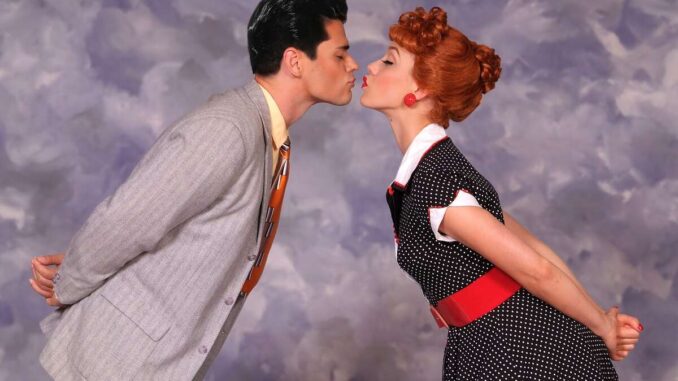
It’s not hard to argue that “I Love Lucy” was one of the greatest TV sitcoms of all time. Through six decades, from original broadcasts in the 1950s to syndicated reruns, DVD collections and online viewings, the iconic series has amassed legions of fans and inspired several generations of TV comedians.
Coming to the Keller Auditorium April 7 as part of the Broadway in Portland series, the national tour of “I Love Lucy Live On Stage” is a high-energy show that aims to recreate the look, sound and feel of a live taping at Lucille Ball and Desi Arnaz’s Desilu Studios.
In advance of the show, here are five reasons why “I Love Lucy” remains a hilarious, innovative landmark.
1. Lucy was a zany everywoman who always dreamed big.
She went where we wanted to go, and did the things we secretly pined to do, whether she was stomping grapes into wine in Italy for a big movie role, breaking into TV commercials (boozily hawking a health drink that turned out to be 23 percent alcohol) or attempting a musical stage number even though she couldn’t carry a note.
The two episodes “filmed” for “I Love Lucy Live On Stage” tap into Lucy Ricardo’s bottomless desire to perform. In “The Benefit,” from the show’s first season, Lucy’s lack of singing talent doesn’t keep her from weaseling into an act with Ricky. Similarly, temporary blindness in “Lucy Has Her Eyes Examined,” from season three, doesn’t stop her from tackling a jitterbug number at Ricky’s nightclub.
2. Lucy was fearlessly funny.
Lucy not only freed our collective comic id, she fully committed her body, face and voice to every gag. She executed physical comedy, typically the realm of male comedians, with boundless energy. (Molly Shannon as Sally O’Malley on “Saturday Night Live” and Melissa McCarthy in “Bridesmaids” are Lucy’s prat-falling offspring.) The next time you watch the “Job Switching episode of “I Love Lucy” (also known as “The Chocolate Factory”), try counting how many candies go in Lucy’s mouth, down her bra and into her hat.
3. “I Love Lucy” crafted the template for TV comedy.
Using multiple cameras, a live audience and top-notch permanent sets, the show “subsequently became the standard for situation comedies,” notes the Library of Congress in a 2011 exhibition honoring the show’s 60th anniversary.
Because “Lucy” was recorded on film (most shows at the time were shot on the more primitive, grainy kinescope), the series could be rebroadcast over and over. If you shudder imagining a TV landscape without multiple online platforms, On Demand and DVR capabilities, just think about a world without reruns. For the touring show, writers Kim Flagg and Rick Sparks expand the taping experience by adding live 1950s-era commercials with jingles and a show host to warm up the crowd.
4. “I Love Lucy” was the first network TV series to feature an interracial couple.
Lucille Ball insisted on working with her real-life Cuban-American husband Desi Arnaz on “I Love Lucy.” CBS execs didn’t want to break that interracial barrier, but Ball famously said: “If no one will give us a job together, we’ll give ourselves one.” The couple toured the country as a comedy team to prove their viability to the network.
For “I Love Lucy Live On Stage,” Euriamis Losada, originally from Santa Fe, Cuba, takes on Desi’s role, conga drums and all, while Thea Brooks pulls out all the stops to channel Lucy.
5. “I Love Lucy” was the cornerstone of a female-run empire.
Before Oprah Winfrey’s Harpo Productions or Mary Tyler Moore’s MTM Enterprises, there was Desilu. Co-owned by Ball and Arnaz, the studio owned 26 soundstages and 457 furnished offices, according the Paley Center for Media. The company produced “Star Trek,” “The Andy Griffith Show,” “Mission Impossible,” “The Dick Van Dyke Show” and other hits. In 1962, Ball bought Arnaz’s shares of Desilu and became the first female president of a major television studio.
